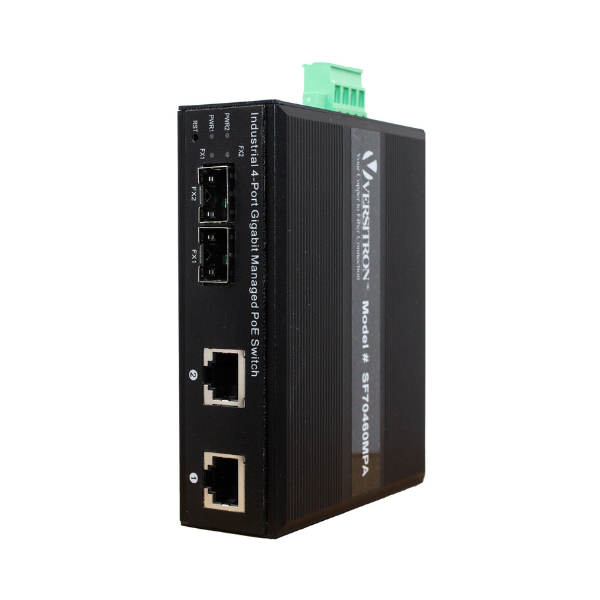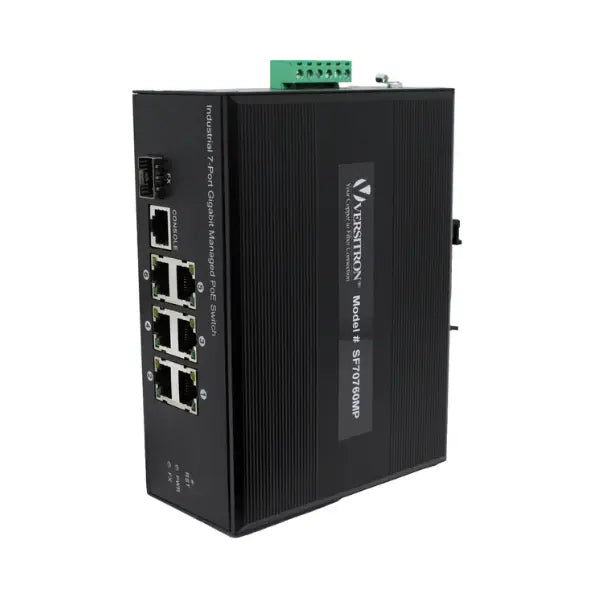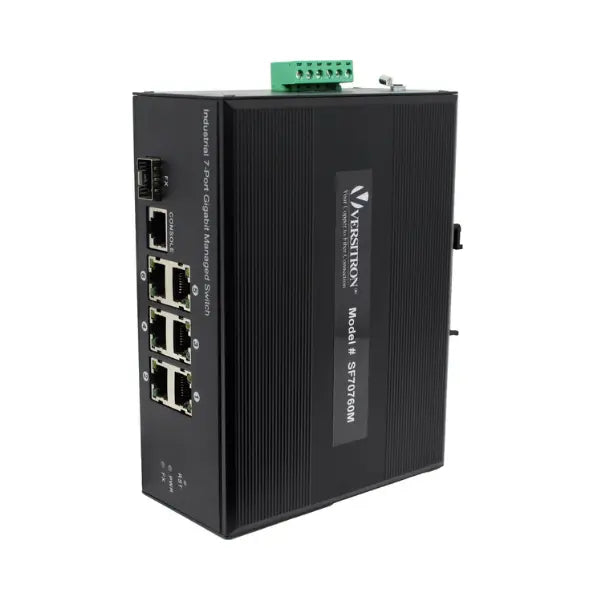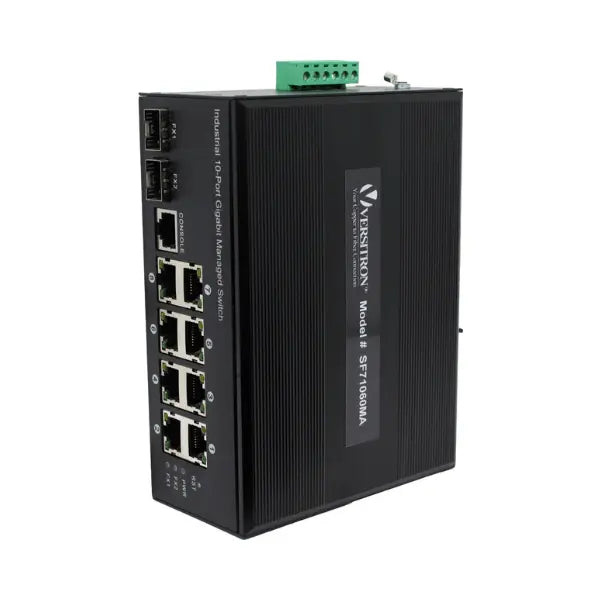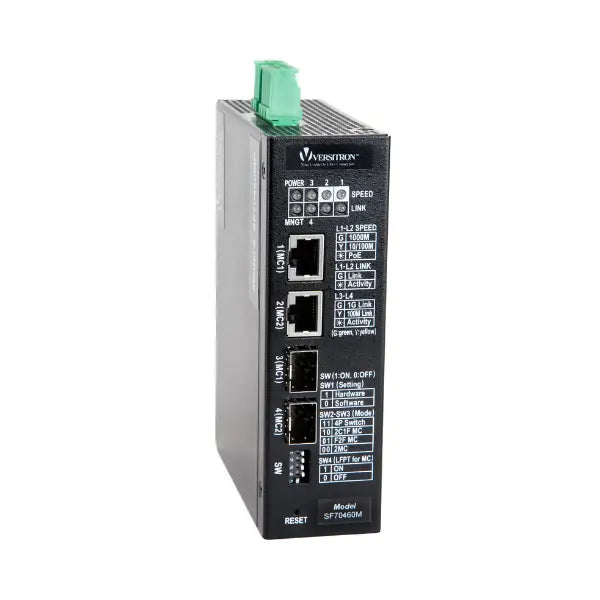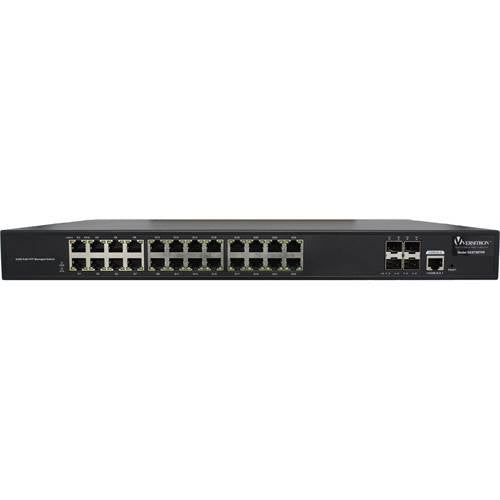Ethernet is a technology that is used to connect various computers in a LAN, MAN, or WAN. It was first introduced in 1980 as compliant to IEEE 802.3-1983 standards. Ever since the commercial introduction of Ethernet, it has evolved in many ways. The parameters have changed according to the industrial requirements of data transfer and speed.
One of the fastest types of Ethernet is Gigabit Ethernet and amongst it, 10 gigabit Ethernet is considered the fastest network for data transmission. When comparing Gigabit Ethernet vs 10 Gigabit Ethernet, the main difference lies in their transmission speeds: Gigabit Ethernet has a transmission speed of 1000 Megabits per second, while 10 Gigabit Ethernet has a transmission speed of 10 Gigabits per second.
This post discusses what 10 Gigabit Ethernet is and the different types of 10G Ethernet, along with the compatible fiber cables for each type.

What is 10 Gigabit Ethernet?
10 Gigabit Ethernet is an electronic data transmission technology that enables data transfer at a speed of 10 billion bits per second. It is also abbreviated as 10GbE, 10GE, and 10GigE.
It was introduced in the year 2002 under standard IEEE 802.ae. It features full-duplex data transmission at the single or multimode fiber. For moderate distance and data transmission rate, the frequency it offers is over 0.85µ to 1.5µ frequency.
Explore our range of 10 Gig SFP switches for high-speed fiber connectivity.
Different Types of 10 Gigabit Ethernet and Their Compatible Fibers/Cables
Depending on various data frequency and transmission distance requirements, 10 gigabit Ethernet is distinguished into the following types.
- 10GBase-SR: It is a 10 gb Ethernet that is defined by IEEE 802.3ae standards. In this type, fiber optic cables are used as data transmission media. This 10 gbe standard features a multimode fiber type and offers multimode transmission at a rate of 0.85µ. The transmission distance suitable for 10GBase-SR is up to 300 meters.
- 10GBase-LR: This type of 10 gigabit Ethernet, which is also covered by IEEE 802.3ae standards. The transmission media is fiber optic cable whereas it is suitable for single-mode transmission distance up to 10km at a frequency of 1.3µ.
- 10GBase-ER: This type of gigabit Ethernet is also defined by IEEE 802.3ae standards and uses fiber-optic cable as transmission media. It transmits data via a single-mode transmission protocol at a frequency of 1.5µ. The maximum data transmission rate here is 40 km.
- 10GBase-CX4: This type of 10 gigabit Ethernet is introduced under IEEE 802.3ak standards. The transmission media in this type is twin axial cables. This network may require integrations like gigabit media converters. It uses an 8B/10B coding protocol to transmit data up to 15 meters. It is used for short-distance transmission like interoffice data transmission at moderate speed.
- 10GBase-T: This type of Ethernet is introduced under IEEE 802.3an standards. It uses unshielded twisted pair cables. As 4 pairs of cables are used here, transmission connectors, network data amplifiers are required in this type of Ethernet. It operates on a low-density parity-check code protocol to transmit up to 100 meters of distance.
10 Gb Ethernet Types: Comparison Summary
|
Ethernet Type |
Standard |
Transmission Media |
Transmission Rate |
Maximum Distance |
Frequency |
|
10GBase-SR |
IEEE 802.3ae |
Fiber optic cables (MM) |
10 Gbps |
Up to 300m |
0.85µ |
|
10GBase-LR |
IEEE 802.3ae |
Fiber optic cable (SM) |
10 Gbps |
Up to 10km |
1.3µ |
|
10GBase-ER |
IEEE 802.3ae |
Fiber optic cable (SM) |
10 Gbps |
Up to 40km |
1.5µ |
|
10GBase-CX4 |
IEEE 802.3ak |
Twin axial cables |
10 Gbps |
Up to 15m |
- |
|
10GBase-T |
IEEE 802.3an |
Unshielded twisted pair |
10 Gbps |
Up to 100m |
- |
Benefits of 10 Gigabit Ethernet and Related Network Devices
Aside from large businesses which need huge amounts of data transfers, the demand for storing and transmitting huge data files has increased for small and mid-sized businesses too.
This is a prime reason why 10 Gb Ethernet has gained traction and businesses prefer blending fiber optics with their existing network. Here are some benefits of building blended networks with 10 gb Ethernet, media converters, network switches, and so on.
- While servers have been used by businesses, small and big, for several years now to store huge data sets, over the last few years, cloud data storage has gained traction. Whether servers or cloud, data transfer needs a seamless and high speed connectivity. 10 Gigabit Ethernet is implemented as it eliminates signal attenuation, offers increased bandwidth, high speed, and so on.
- It is a preferred choice for businesses which need to send audio and video files as well as other types of bulky files over a reasonably long geographical distance. Data centers have benefitted tremendously because of 10 GbE.
- You might wonder, "Do I need 10 Gigabit Ethernet?" With work from home is more common than ever before, 10GbE definitely serves a bigger purpose and is worth investing into. This is because it simplifies connecting to virtual networks through remote access.
- It increases the security of our network and offers way better privacy than 1G Ethernet. The wires are well covered and physically connected to the router. This makes external access such as hacking or data theft difficult.
- It enhances your server capabilities, and is especially useful if you have multiple computers connected to your server along with other connected devices.
- Installing a high capacity network on an existing infrastructure and not have to dig or dismantle any constructions are huge benefits owing to 10GbE.
Since 10 gigabit Ethernet is only compatible with a specific type of 10g ethernet cables, it is important to choose fibers or cables accordingly. However, the 10 gig Ethernet connection over fiber optics or copper cables, may require gigabit media converters, gigabit support, fiber optic managed switches, etc.
However, in order to achieve quality data transmission over 10 gigabit Ethernet, you must utilize quality products. The quality of cables, fiber optic media converters, switches, etc can impact the overall transmission process. Therefore, you should highly consider sourcing these products from a trusted supplier like VERSITRON. Since 1958, the company has been providing fiber optic technology products. These products are used in various military, government, and commercial
FAQs
Gigabit Ethernet (GbE) is a networking technology employed in local-area networks (LANs), capable of transmitting frames at a speed of 1 Gigabit per second.
10 Gigabit Ethernet (10GbE) is an electronic data transmission technology that offers data transfer at a speed of up to 10 billion bits per second.
Cat5e, Cat6, and Cat6A types of Ethernet cables are recommended for a home and business network looking for gigabit internet speeds.
10 gigabit Ethernet can be used for various networks, including SMBs (Small and Medium-sized Businesses) and enterprises, data centers, and home networks.



